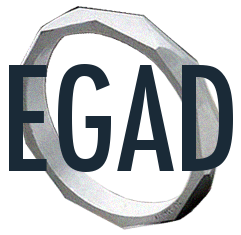Module 2 -Â Mapping the Curriculum
![]()
This module provides an overview of processes for gaining insight into programming through mapping. Explanations and examples of attribute maps, assessment maps, ITU (Introduced, Taught, Utilized) surveys, and mapping of full curricula are included.
In this module you will:
- Identify pertinent elements to include in a curriculum map of your program(s).
- Select a mapping method that will enable you to identify and highlight program strengths, gaps, overlaps and redundancies
What is Mapping?
![]()
Curriculum mapping is a way to document and share curricula across programs and examine the whole for gaps, overlaps and redundancies. It’s a way of finding out where and how knowledge and skills are developed and enables programs to assess how well programming and processes are aligned to intended outcomes.
Mapping is a process that enables each faculty member to record the content and skills taught and how those skills and knowledge are assessed and aligned to the achievement of identified graduate attributes. The data generated through mapping enables informed program improvement.
Curriculum mapping can create an atmosphere of joint responsibility for student success. The process provides a forum for discussion and planning for improvement of the ways content, skills and standards are supported within a larger system.
The process invites a shift in thinking about curriculum as static to one that recognizes curriculum as dynamic, adaptive and evolving.
View the Live Workshop on Program Mapping:
![]()
Steps in a Collaborative Mapping Process:
- Individual instructors complete course maps
- Colleagues review one another’s maps
- This is especially useful for those whose courses serve as co-or pre-requisites.
- Maps from all courses within a program are reviewed and patterns, gaps, overlaps and redundancies are noted
- An action plan, based on an interpretation of the findings, is developed. This plan will
- help to categorize the issues arising from the maps i.e. issues of course content, skill/knowledge progression; instructional and assessment strengths/misalignments; skill integration etc.
- outline a timetable for implementing change and establish a committee and roles to implement the plan
- The plan is implemented. Strategies may include
- Aligning the curriculum so that materials, instruction and assessment all support the intended learning
- Looking for opportunities for integration and clustering of content and skill development
- Adding resources, learning activities and assessment opportunities as require
- The results are evaluated.
